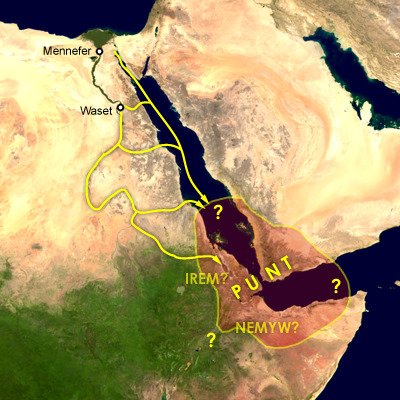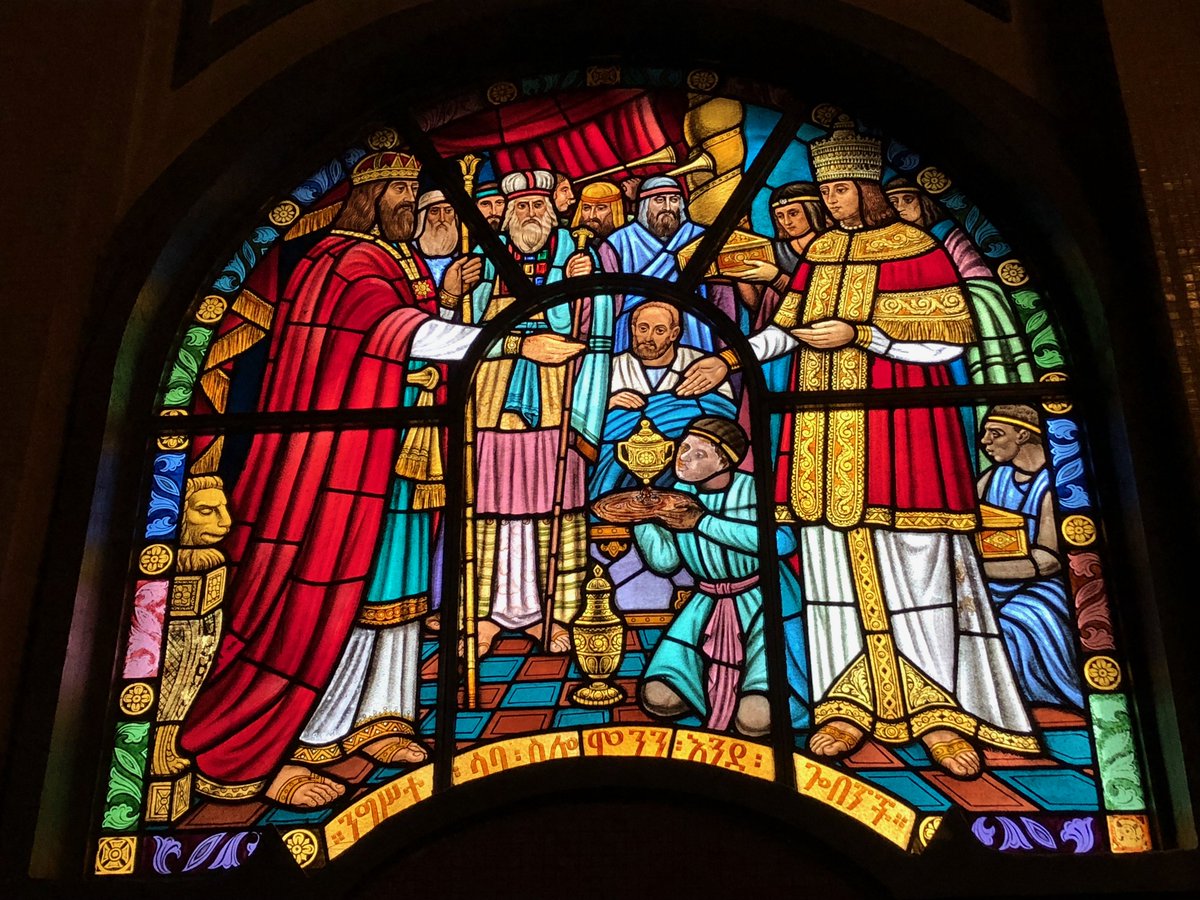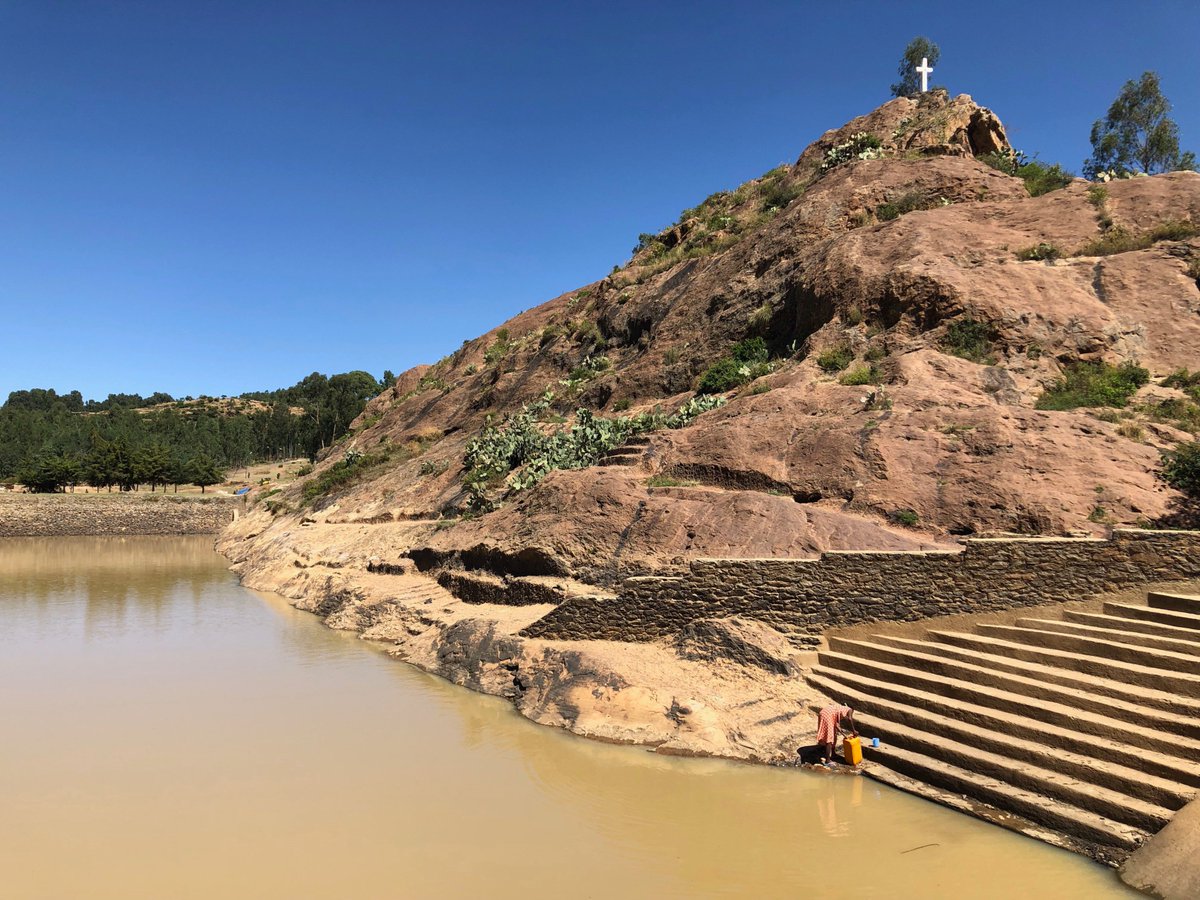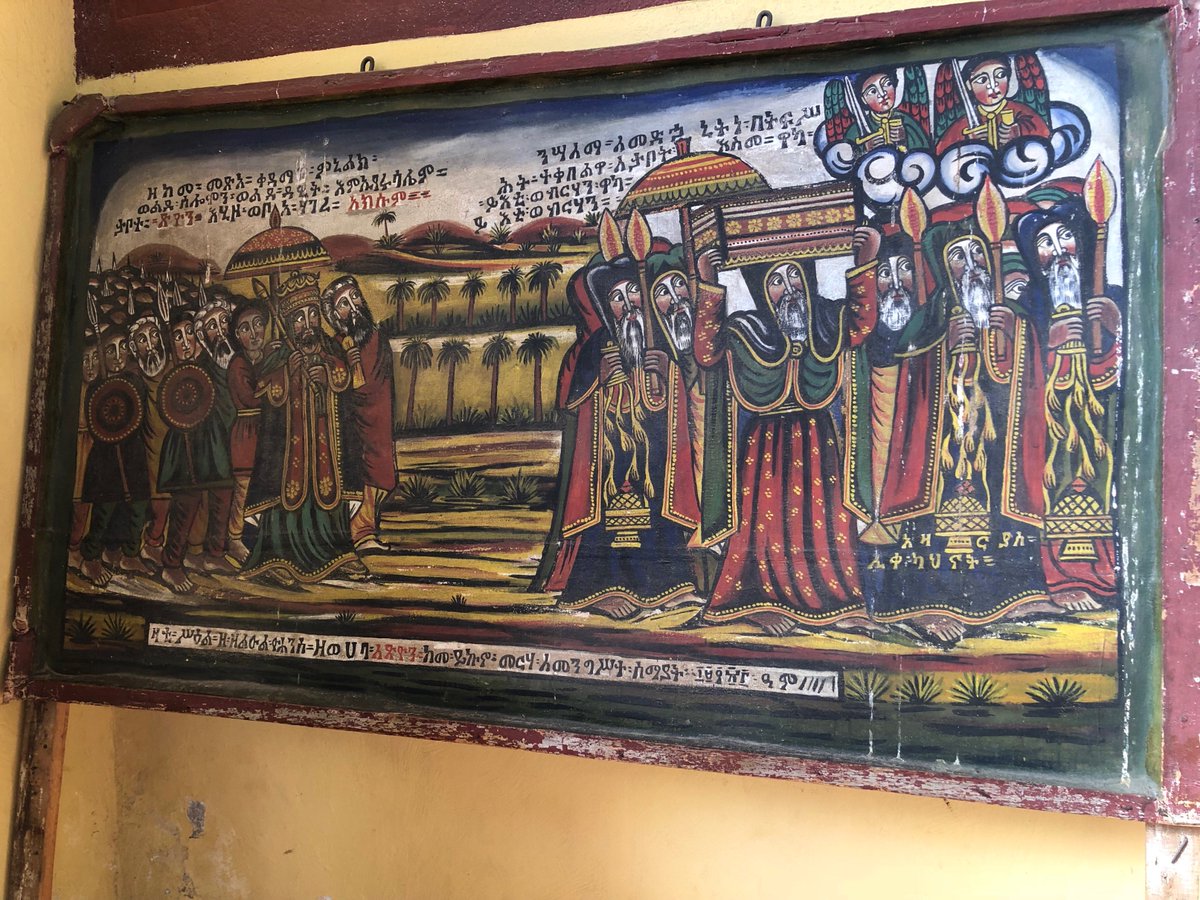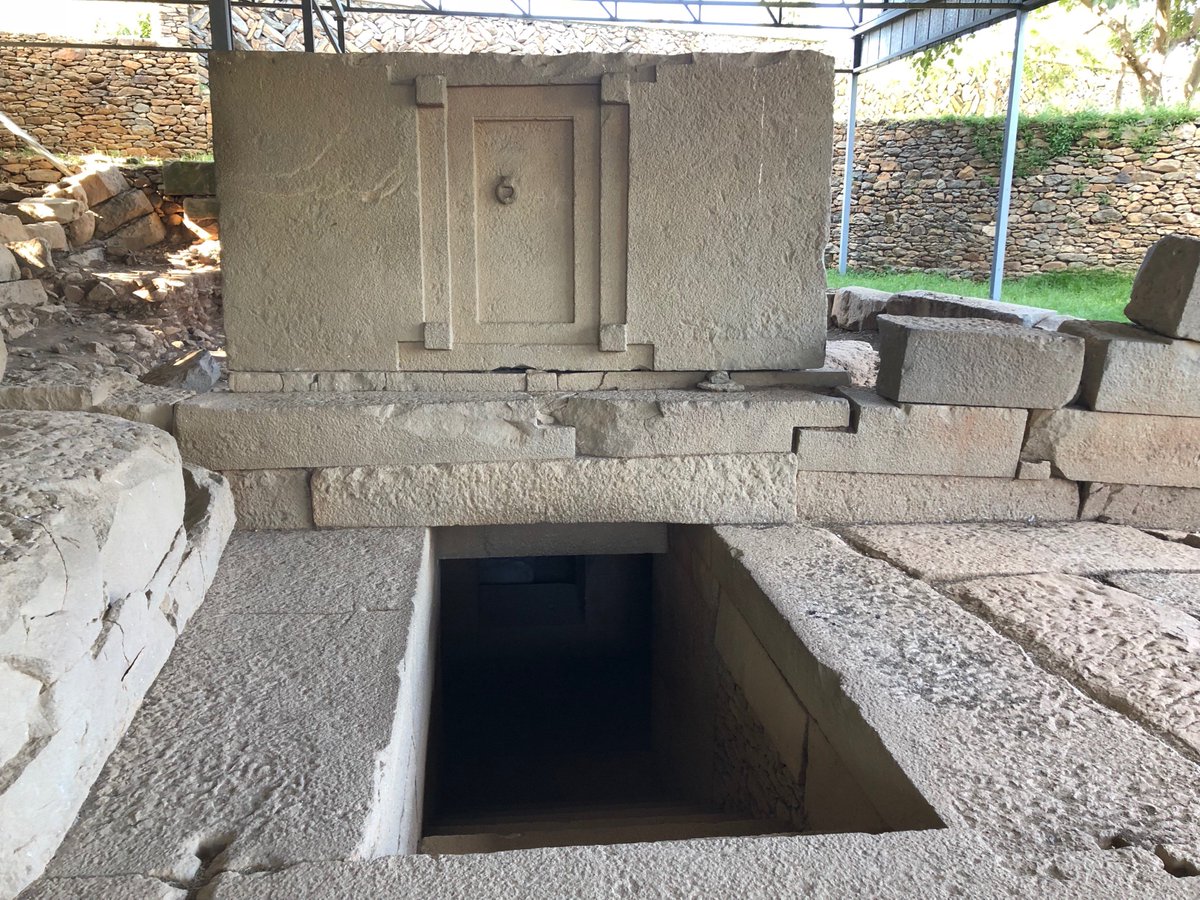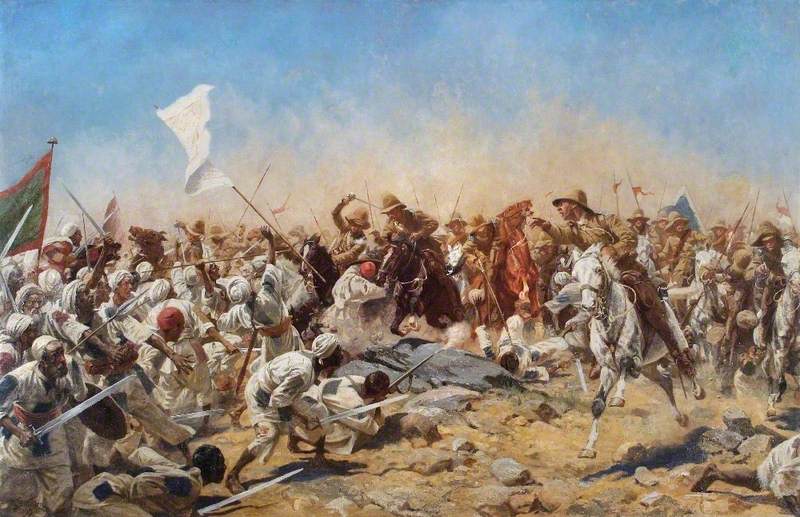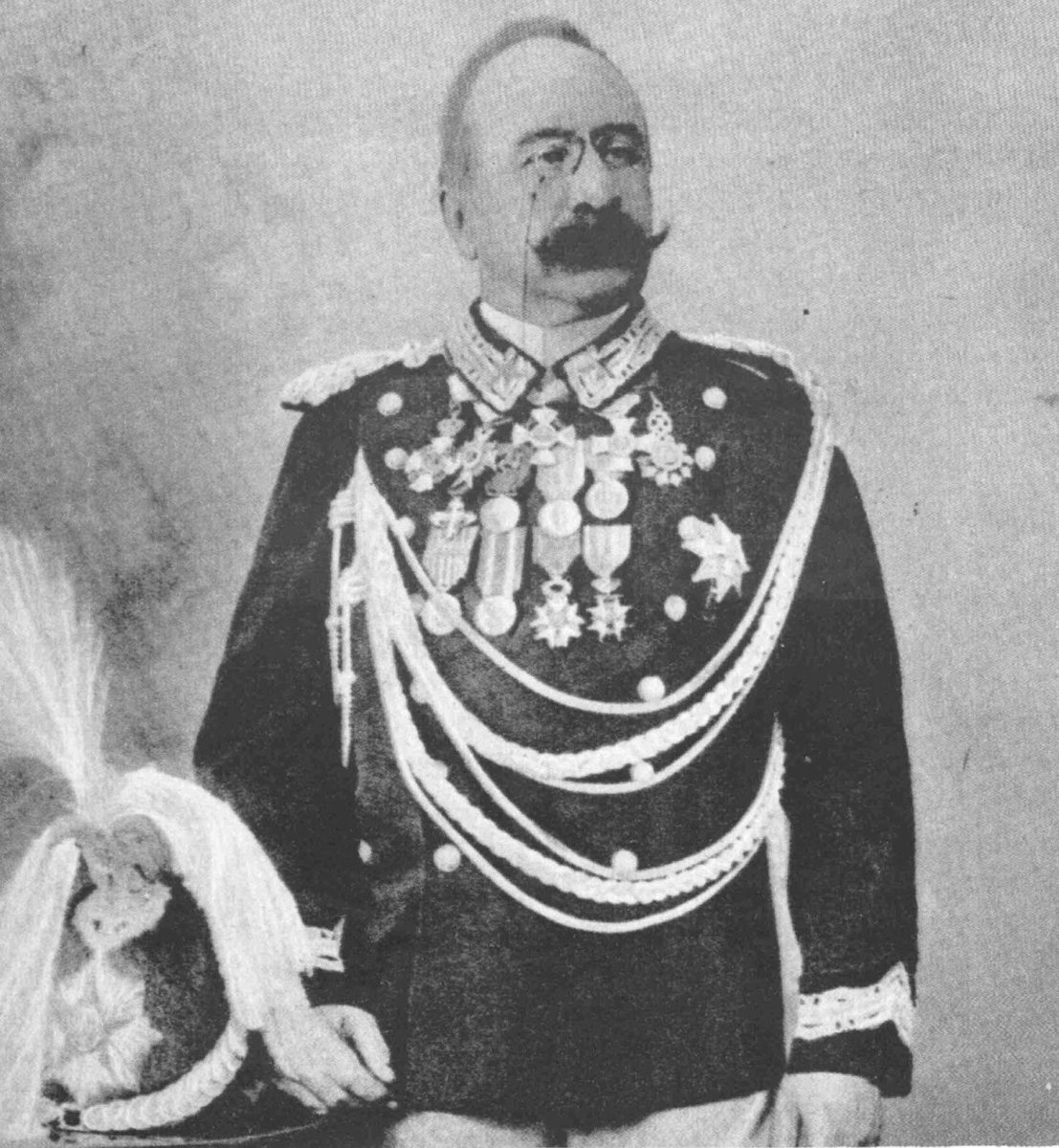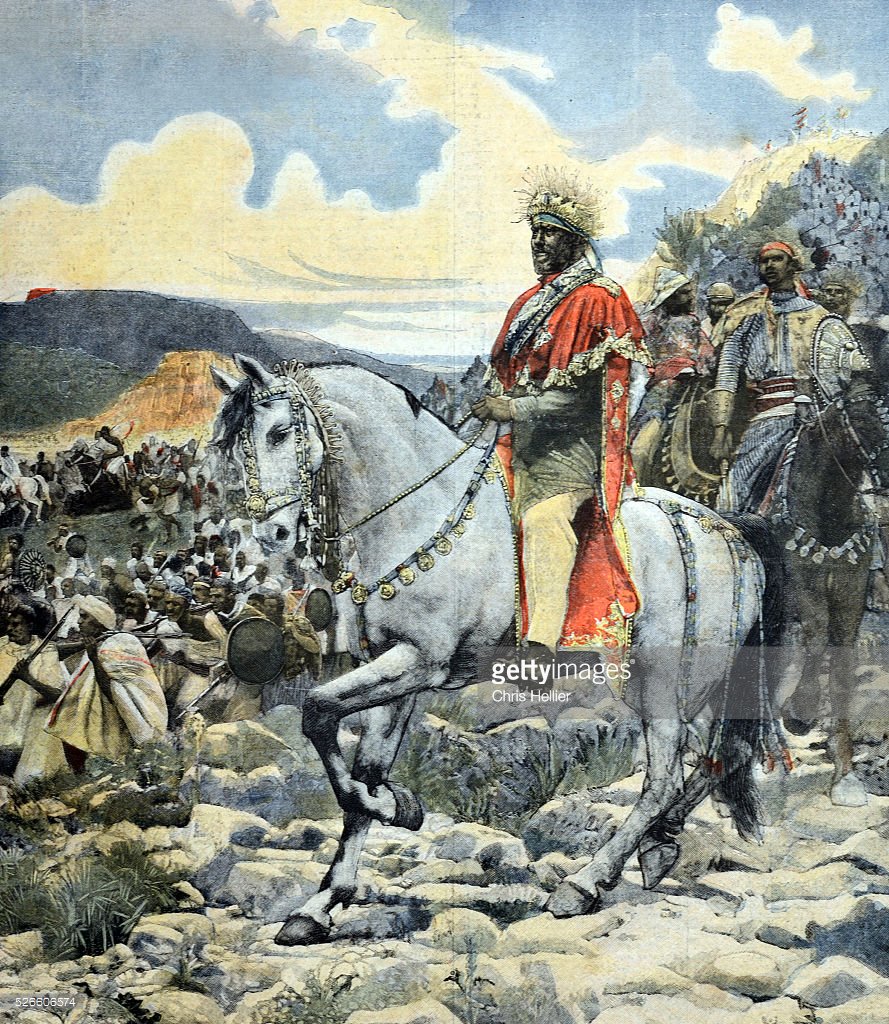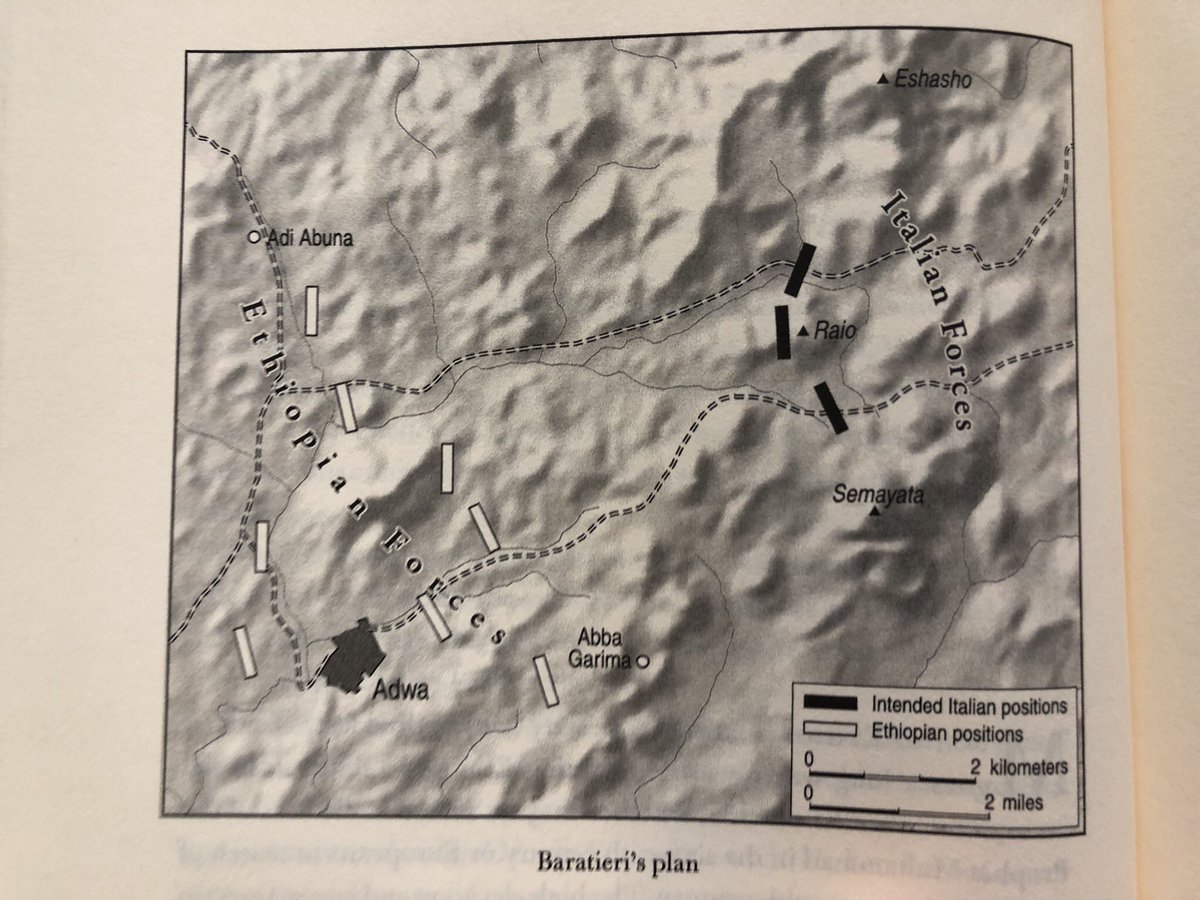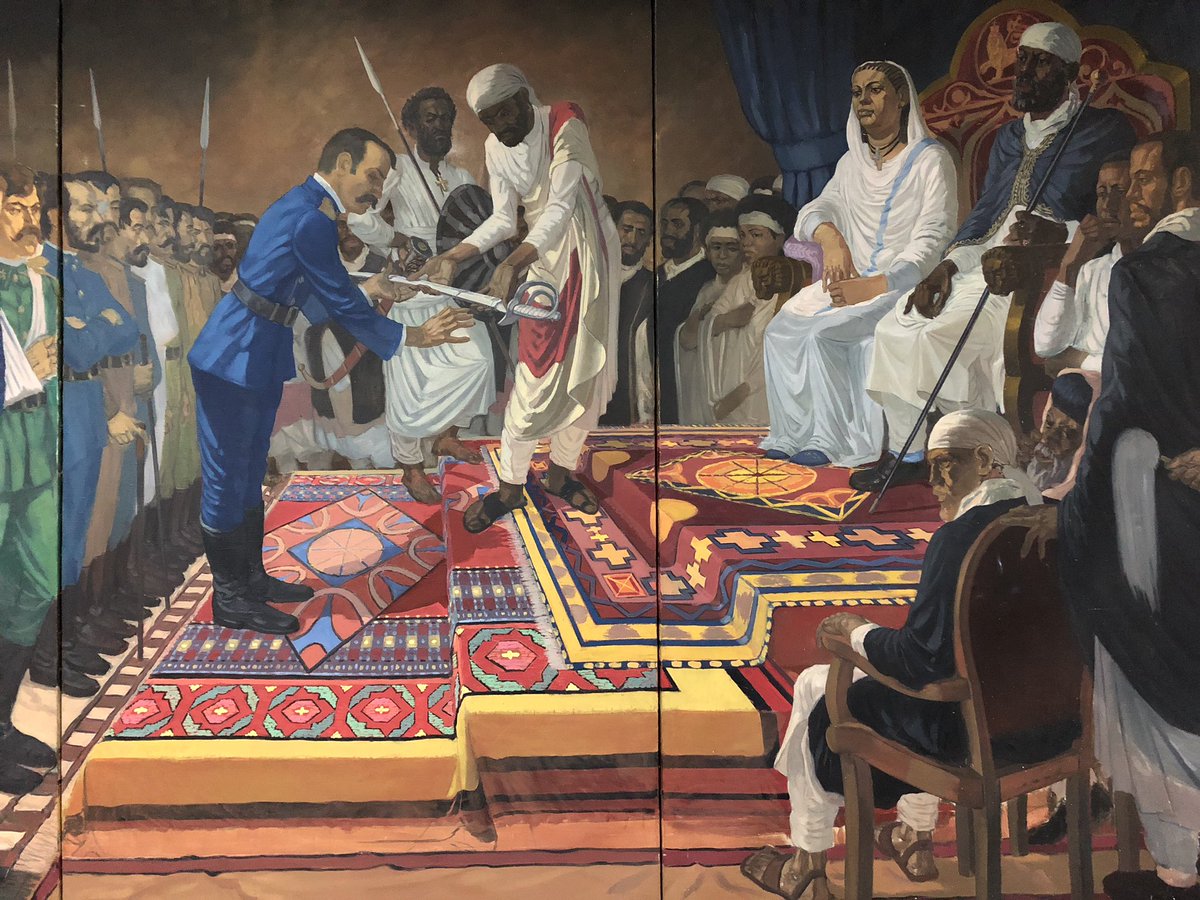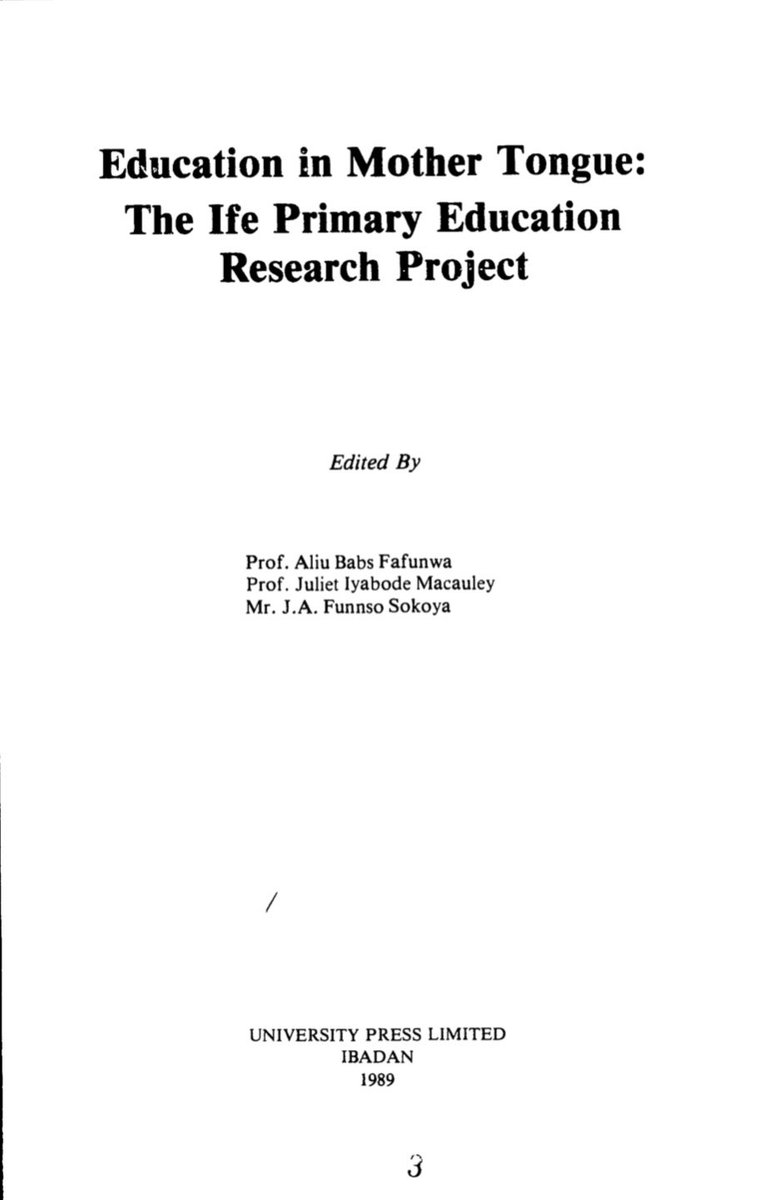I'll begin with the ancient history ... and it goes way back. Because modern humans - and before that, the ancestors of humans - almost certainly originated in Ethiopia. 🇪🇹 (sub-thread):
https://t.co/nsGdM0JIlZ
The first likely historical reference to Ethiopia is ancient Egyptian records of trade expeditions to the "Land of Punt" in search of gold, ebony, ivory, incense, and wild animals, starting in c 2500 BC 🇪🇹
Ethiopians themselves believe that the Queen of Sheba, who visited Israel's King Solomon in the Bible (c 950 BC), came from Ethiopia (not Yemen, as others believe). Here she is meeting Solomon in a stain-glassed window in Addis Ababa's Holy Trinity Church. 🇪🇹
References to the Queen of Sheba are everywhere in Ethiopia. The national airline's frequent flier miles are even called "ShebaMiles". 🇪🇹
The ruins of a palace outside Axum, in northern Ethiopia, is popularly called "Sheba's Palace", though most archaeologists now believe it is actually a nobleman's house dating from the 6th Century AD (more on it later). 🇪🇹
Similarly, a nearby ancient pool of water just outside Axum is called "The Queen of Sheba's Bath", though more likely it was used exactly as it is now - as a reservoir. 🇪🇹
But the Queen of Sheba's connection to Ethiopia's history involves a lot more than local legends. Because Ethiopians believe that Sheba has a son with Solomon, named Menelik, who returned to Ethiopia carrying Israel's greatest relic, the famed Ark of the Covenant. 🇪🇹
This is not some errant legend - it lies at the core of Ethiopian Orthodox Christian belief. At the heart of every Ethiopian church lies a veiled "Holy of Holies" where only the priest is allowed to enter, which contains a replica of the Ark. 🇪🇹
Like the Israelites' tabernacle in the desert, or the Temple in Jerusalem, every church in Ethiopia has a curtain cordoning off the Holy of Holies, where the Ark (or a representation) is kept. Many (though not all) are built in a circular form, with the Ark at its center. 🇪🇹
As for the real Ark of the Covenant, Ethiopians beiieve it was first brought (c 400 BC) and hidden at Tana Qirqos on the banks of Lake Tana. And there IS some evidence of Jewish ritual objects at this monastery (which I did not get a chance to visit). 🇪🇹
https://t.co/zgNXE0wiu9
And, of course, there were (until recently) Jewish communities in Ethiopia that sometimes traced their mysterious lineage back to Sheba's son Menelik, and his journey to Ethiopia with the Ark.
https://t.co/oQsn1llMvW
Until the Emperor Hailie Selassie was overthrown in 1974, the various royal houses of Ethiopia nearly all traced their lineage back to Menelik and Solomon, which is why their symbol was the Lion of Judah (statue in Addis Ababa). 🇪🇹
Meanwhile, in Axum, a kingdom was taking shape, starting as early as 400 BC. It was coincident with the Roman Empire, and traded with Rome, as well as India and China. It ranked as one of the great states of the classical world. 🇪🇹
One of the earliest traces of the civilization is a sandstone temple at Yeha, northeast of Axum, dating from as early as the 7th Century BC. The temple is strikingly precise in both its overall geometry and its finely cut stone masonry. 🇪🇹
Next to the temple at Yeha is an excavation through to be a palace, dating back to the same early period (7th Century BC). German archaeologists are currently working on it to learn more. 🇪🇹
But the most emblematic of relics of Axum's civilization are the giant granite stelae, standing in the modern city's center, believed to be grave markers for the kingdom's pre-Christian rulers. 🇪🇹
The largest one, standing 33m and weighing 520 tons, collapsed sometime soon after it was built, taking out another king's giant 360-ton dolmen tomb with it. Some (fancifully?) credit the catastrophe for triggering the kingdom's conversation to Christianity. 🇪🇹
It is believed that the huge granite stelae (like this unfinished one) were transported to Axum by elephants, then carved and raised on site. 🇪🇹
Axum's giant stelae do, in fact, stand above royal tombs, though they have long since been cleaned out by robbers. 🇪🇹
This tomb in the Axum stelae field, dating from the 4th Century AD, was covered with a block of granite (which originally lay flat over the entrance) shaped like a door, earning it the name "The Tomb of the False Door". 🇪🇹
Inside of Axum's "Tomb of the False Door" (4th Century AD) rests a mysterious sarcophagus that appears to be hollow, but has no apparent seam, so no one has been able to open it and see what's inside. 🇪🇹
Around 350 AD, King Ezana of Axum carved this stelae celebrating a military victory of the neighboring Kingdom of Kush (in Sudan). Written in Ge'ez (the ancient language of the Ethiopian church), Sabaean, and Greek, it serves an an Ethiopian version of the Rosetta Stone. 🇪🇹
King Ezana's stone (which was dug up by local farmers in their field outside Axum) also praises God for his victory, further evidence supporting records that Ezana was the first king of Axum to convert to Christianity. 🇪🇹
Ethiopians believe that soon afterwards (400 AD) the real, original, bona fide, we're-not-kidding Ark of the Covenant was moved from Lake Tana to Axum, where it is said to rest - to this very day - in a heavily guarded chapel next to the Church of St. Mary of Zion. 🇪🇹
This picture is taken against the glare of the sun, but if you look close, you can see a hunched figure in a yellow shawl next to the Chapel. That is the keeper of the Ark, a monk who is the only person allowed to see it, and may never leave the enclosure for his entire life. 🇪🇹
Every January at Timkat (Epiphany), the priests of Axum parade carrying what is supposed to be the Ark of the Covenant, but is thought to be a replica, not the real thing, which never leaves the Ark Chapel. (not my photo) 🇪🇹
Meanwhile, Axum continued to prosper, with its coins - bearing crosses and the images of its kings - traded widely.
It was in this era, the 6th Century AD, that the mansion at Dungur, outside of Axum - commonly called Sheba’s Palace - was likely built. 🇪🇹
It’s also in the 6th Century that the dual tombs of Kings Kaleb and Gebre Meskel were built, near Axum. 🇪🇹
It’s also around this time that remote monasteries such as Debre Damo, north of Axum, were founded by early Ethiopian Christian saints. 🇪🇹 (sub-thread)
https://t.co/DPo0pyKTZV
Like in the West, these monasteries became repositories of ancient texts and illuminated manuscripts, like this one at Yeha depicting Palm Sunday 🇪🇹
In 570 AD, a retainer of the King of Axum, based in Yemen, nearly conquered the trading center of Mecca with a large army led by war elephants. That was the year, according to some accounts, that the Prophet Muhammed was born in that city. 🇪🇹
The rise of Islam, in the 7th Century AD, was calamitous for the Kingdom of Axum in Ethiopia, cutting off its trade, political, and cultural links with the rest of the Christian world. 🇪🇹
Building remote, hard-to-reach cliff-top churches in Tigray was one way Ethiopia's Christians withstood repeated Muslim invasions over the following centuries. 🇪🇹 (sub-thread):
https://t.co/n5DcKHsDP2
It took until the 12th Century AD to see the rise of a new (non-Solomonic) Zegwe Dynasty led by King Lalibela, who built a complex of rock-hewn churches at his capital in central Ethiopia, which took on his name. 🇪🇹 (sub-thread):
https://t.co/GqCNlpBq3c
At that time, Europe was engaged in the Crusades in the Holy Land. In 1165 AD, the Pope received a mysterious (and fake) letter purporting to be from "Prester John", a powerful Christian king in the east who wanted to ally against the Muslims. 🇪🇹
Initial hopes that "Prester John" might prove to be the Mongol Khan didn't pan out. But eventually European hopes focused on the quite real Christian kingdom of Ethiopia, and were one factor that helped inspire Portuguese efforts to discover a sailing route around Africa. 🇪🇹
In the early 1600s, the Jesuits reached the royal court in Ethiopia and actually succeeded in converting two emperors to Catholicism. But this sparked a revolt and they were ejected from the country. 🇪🇹
Shortly afterwards, in 1636, a new dynasty, claiming descent from Solomon, established a new capital at Gondar (sub-thread): 🇪🇹
https://t.co/O2822KL8Wi
These decorations on the wall of Emperor Fasiladas’ palace banquet hall in Gondar pay tribute to the Portuguese soldiers sent to aid him in fighting the Muslims of Sudan and the Red Sea. 🇪🇹
But by the time the Scottish adventurer James Bruce visited Gondar in the 1770s, Ethiopia had fallen into chronic civil war among rival nobles, a united empire in name only. 🇪🇹
This is the end of the ancient history thread on Ethiopia. The modern history thread (post-1800) begins here:
https://t.co/N5Myngonwf
The first of these men was the Tewodros, who began his rise to power as the leader of an outlaw band, in a land riven by civil war, before fighting his way up to Emperor in 1855, and uniting Ethiopia under his rule. 🇪🇹
Emperor Tewodros wanted to develop his country with European technology, and wrote to Queen Victoria asking for her to send skilled technicians and firearms. When she did not reply, he took several Europeans at court, including the British consul, hostage. 🇪🇹
The British responded in 1868 by launching a military expedition under General Robert Napier, which advanced overland on Tewodros' remote mountain fortress of Maqdala, in central Ethiopia. 🇪🇹
The British won the Battle of Maqdala, capturing the fortress, and Emperor Tewodros shot himself with a pistol that had been a gift from Queen Victoria. 🇪🇹
The huge "Sevastopol Cannon" that Emperor Tewodros had cast apparently still sits up at Maqdala, hardly touched since the battle in 1868 (not my photo). 🇪🇹
British medal struck for those who participating in the "Abyssinian Campaign of 1868" 🇪🇹
A good non-fiction account of Emperor Tewodros and the British campaign against him is "The Barefoot Emperor" by Philip Marsden
https://t.co/RRzTvPpf6A
An enjoyable fictional account of the campaign is "Flashman on the March" by George MacDonald Fraser
https://t.co/0kERO9bLTS
Tewodros remains one of the most popular and admired figures in Ethiopia today. His highly recognizable image is frequently found in the windows of local minivans and tuk-tuk vehicles, like this one in Gondar. 🇪🇹
One of the local Ethiopian warlords who sided with the British was Yohannes, based in Mekele in Tigray. In the aftermath of the Battle of Maqdala, he rose to become emperor. 🇪🇹
In 1875, Ethiopia faced the threat of invasion from Egypt, led by the ambitious Ismail Pasha, who had just built the Suez Canal. The Egyptians established themselves in Eritrea, on the Red Sea coast. 🇪🇹
The Egyptian Army that tried to invade Ethiopia even included some Confederate veterans of the American Civil War, living in exile after their defeat. 🇪🇹https://t.co/ekgRsF2Png
But Emperor Yohannes defeated the Egyptian army at the Battle of Gura, ending the threat of invasion. The war was finally settled by the Hewett Treaty in 1884, between Ethiopia, Egypt, and Britain, which guaranteed Ethiopia access to the port of Massawa in Eritrea. 🇪🇹
By that time, all three countries faced a new threat: an Muslim uprising in Sudan led by the self-proclaimed "Mahdi" (or messiah).
In the 1880s, Mahdist forces from Sudan raided Ethiopia and burned many of the palaces and churches of Gondar to the ground. (see sub-thread): 🇪🇹
https://t.co/KutVbmGtz0
Emperor Yohannes went out to confront the Madhist invaders, and was killed in battle with them in 1889. 🇪🇹
Meanwhile, something important was happening in Eritrea. With the Egyptians struggling with debt and revolt, the British invited the Italians to step into their shoes in Eritrea, mainly to check the French in Djibouti, as part of the so-called colonial "Scramble for Africa" 🇪🇹
Recently-unified Italy sent settlers to Eritrea, to extend its control beyond the port of Massawa into highland areas traditionally claimed by Ethiopia. 🇪🇹
The Italians also trained local levies of Eritrean soldiers, known as "askari", commanded by Italian officers. 🇪🇹
Many of the Italian officers stationed in Eritrea took temporary "wives" (or "madamatos") among the local women - a relationship that usually ended when the men were posted back home, but gave rise to an estimated 20,000 mixed descendants in Eritrea today. 🇪🇹
Italy's colonial project in Eritrea was controversial back home. Many Italians considered it a vain distraction from more important territorial claims in Europe (Trieste and Trento), and the country's own domestic economic development.
These mixed feelings were brought to a head when, in 1887, an Ethiopian force surrounded and almost completely wiped out an Italian unit of 550 men at Dogali, outside Massawa. Some thought it must be revenged, others saw it as evidence of Italy's folly in Africa. 🇪🇹
During this time, the Italians provided support to Menelik, the king of Showa in southern Ethiopia, as a kind of spoiler to Emperor Yohannes. The policy was one of "divide and conquer". 🇪🇹
Menelik, who shared the name of (and descent from) the founding Solomonic king of Ethiopia, had his capital on Mount Entoto, just north of modern Addis Ababa, where he founded this church. 🇪🇹
Just downhill from the church, on Mount Entoto, is Menelik's modest original palace. 🇪🇹
As King of Showa, and a nominal subject of Emperor Yohannes, Menelik aggressively expanded his domain to the south and east, capturing the traditionally Muslim city of Harar on Ethiopia's key trade route to Djibouti. 🇪🇹
Menelik also married Taytu Betu, a smart and assertive noblewoman who gave him a power base in Ethiopia's north, where he was otherwise weak. 🇪🇹
After Yohannes died in battle against the Sudanese Mahdists in 1889, Menelik swiftly moved to defeat other claimants (including Yohannes' son) and proclaim himself Emperor of Ethiopia. 🇪🇹
Emperor Menelik II then founded Addis Ababa (which means "new flower") as his new capital, and imported Eucalyptus trees there to ensure sufficient wood for construction and fires. 🇪🇹
In 1889, Menelik signed the Treaty of Wuchale with Italy, ceding Eritrea and - at least the Italians thought - accepting an Italian protectorate over Ethiopia. 🇪🇹
Once he consolidate his power as emperor, Menelik disputed this interpretation, prompting the Italians, under General Oreste Baratieri (a veteran of Garibaldi's "Red Shirts" who fought to unify Italy), to invade and occupy Tigray, in northern Ethiopia. 🇪🇹
Faced with this challenge to his sovereignty, in 1895, Menelik called up a feudal army of over 100,000 men which marched north from Addis Ababa to face down the Italians. 🇪🇹
While some were armed with spears, a majority of Menelik's Ethiopians were actually equipped with modern rifles. They also had nearly as many modern artillery pieces as the Italians, with longer range. 🇪🇹
Realizing he was outmatched, and reinforcements from Italy would not arrive in time, Baratieri wanted to find a way to pull his 17,000 troops back to Eritrea. But his junior generals, eager to avenge the earlier defeat at Dogali, goaded him to attack. 🇪🇹
On the night of February 29, 1896, believing (plausible but false) intel reports that Menelik’s much larger army was divided by internal rivalries, Baratieri ordered his four brigades to take up a threatening position in the hills just east of Adwa, in northern Ethiopia 🇪🇹
Looking east near Adwa towards the battlefield, in northern Ethiopia 🇪🇹
Baratieri did not intend to attack. But one of his more aggressive generals, perhaps seeking to provoke an engagement, advanced farther than ordered, smack into the Ethiopian army. 🇪🇹
By the morning of March 1, that brigade, instead of being part of a solid defensive line, was isolated, pinned down, and in danger of being overrun. 🇪🇹
Baratieri sent his right-most brigade forward to support it, but due to the terrain it went down a ravine and was isolated and cut off as well. The Italian army was stumbling around, being cut up into separate pieces, in the face of a much larger enemy. 🇪🇹
At that point, Menelik - with plenty of men at his disposal - sent a huge force right up the middle against Baratieri’s weakened and isolated center, and the battle was quickly over. 🇪🇹
The Battle of Adwa (1896) was historic because it was the first time an indigenous African army had won, not just a single battle, but an entire campaign against a European would-be colonizing force, and preserved its country’s independence. 🇪🇹
Ethiopian boy overlooking the battlefield at Adwa, where the Emperor Menelik decisively defeated an Invading Italian army in 1896. 🇪🇹
Nearly 3,000 Italians were taken prisoner at Adwa, and were later ransomed for both money and Italian recognition of Ethiopia's sovereignty.. 🇪🇹
Menelik treated the 800 captured "askari" who fought for the Italians as traitors, and ordered one hand and one foot to be cut off as punishment. 🇪🇹
Hat, umbrella, and crowns belonging to Emperor Menelik II, in Ethiopia’s National Museum in Addis Ababa 🇪🇹
Painting of Italian general formally submitting to Emperor Menelik II and Empress Taytu Betul after the Battle of Adwa, at Ethiopia’s National Museum in Addis Ababa 🇪🇹
And oh look, hey, I forgot: the weapons of Emperor Tewodros (defeated by the British) at Ethiopia’s National Museum in Addis Ababa 🇪🇹
